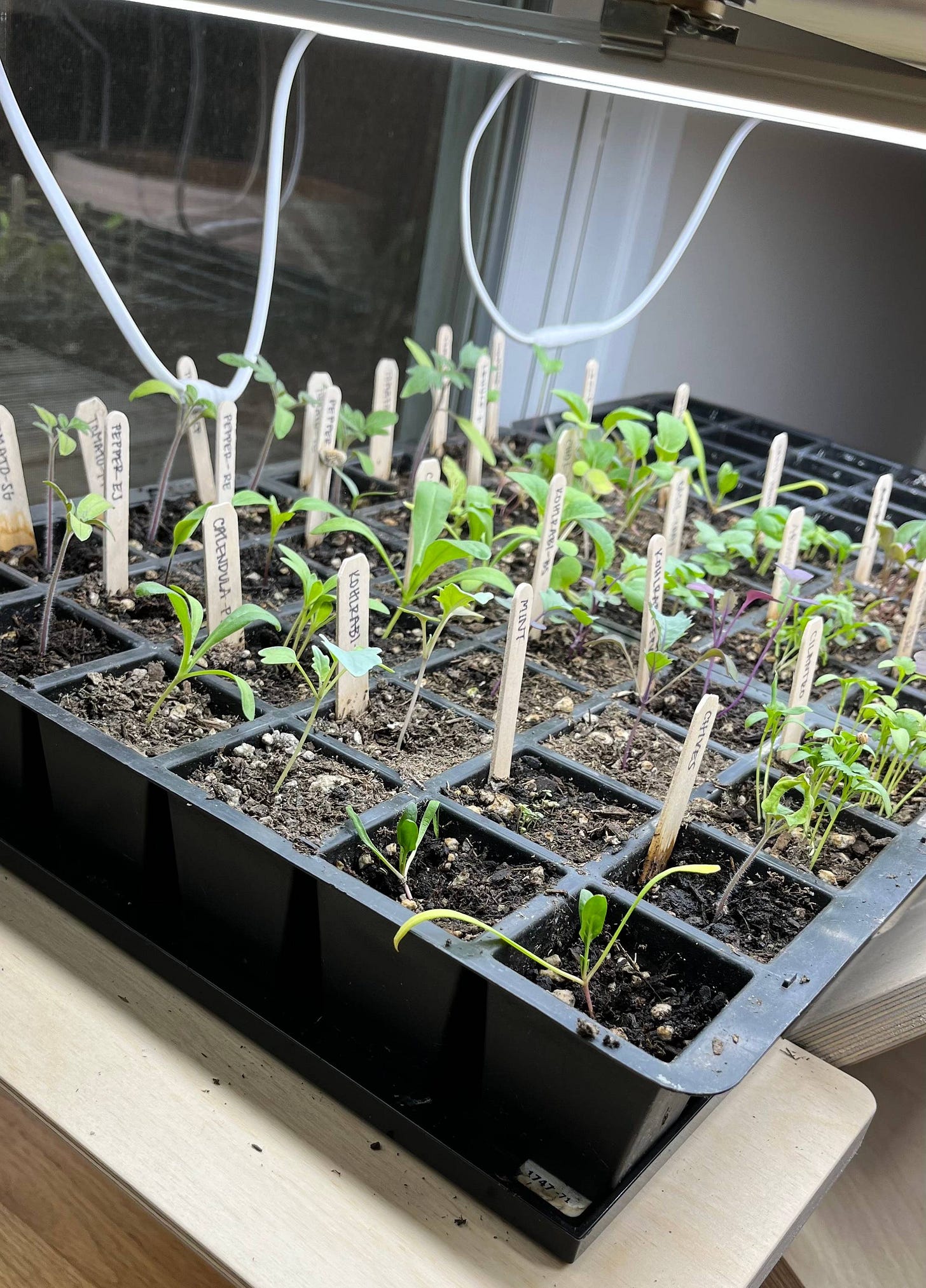Lessons from my Pacific Northwest garden.
If you live in the PNW and have had to say goodbye to a beloved crop, this one’s for you.
I used to chase the dream of growing everything from purple kohlrabi to melons, even corn (I have some stalks I’m looking at as I write this that probably aren’t going to be ready before the cold). But my garden had other plans. This is the story of how I’ve learned to work with my microclimate, make intentional choices, and find joy in what actually grows.
Days to Maturity
Over time, I’ve had to make some tough decisions. Not everything thrives in my garden, and I’ve learned that choosing what not to grow is just as important as choosing what to plant.
My garden gets less full sun than ideal, and our region’s cool springs and mild summers mean the growing season is shorter than I’d like. I used to ignore the “days to maturity” on seed packets, hoping for the best. But after watching too many crops stall out before harvest, especially those with longer timelines, I’ve started paying closer attention.
After last year, I stopped trying to grow space-hogging crops like cabbages. They’re satisfying, sure, but they take up too much real estate for too long, and I’ve learned that space is precious in my garden.
This the last year I’ll grow purple kohlrabi. It’s beautiful, no doubt. But as I pulled out the sad-looking, woody, half-inch bulbs this weekend that were sitting right next to the plump, thriving variety I now prefer, I realized it was time. I want what I grow to actually make it to my kitchen. That means making these kinds of choices, even when they’re hard. I do have a shorter days-to-maturity melon I’m not ready to give up on yet.
Following are a few things I’ve started doing that have really helped, and that I wish I had given into sooner. Also, a screenshot of my probably over-complicated spreadsheet.
Seeds vs. Starts: What I’ve Learned
Now, I start planning in January. I use grow lights to give marigolds, nightshades like tomatoes and peppers, cucumbers, and even violas, melons, and herbs a head start indoors. I’ve learned which crops do better direct-sown like carrots, radishes, and quick greens, and which ones need a boost from starts, either my own or from local nurseries. Next year, I’ll make sure the room I keep my starts in doesn’t fall below 70°F at night.
I’ve also embraced succession planting, even if I don’t always get it perfect. When one crop finishes, I try to have something ready to take its place. It keeps the garden productive and helps me stay in rhythm with the season. I imagine I will get better at this year after year.
Direct Sow Favorites:
Root vegetables like carrots, beets, and radishes
Quick greens such as arugula, spinach, and lettuce
Peas and beans that prefer undisturbed roots
Herbs like cilantro, chives, tarragon, and dill
Starts or Transplant Favorites:
Tomatoes, peppers, and eggplant and heat-loving and slow to mature
Brassicas like broccoli, kale, and cauliflower
Squash, cucumbers, and melons

Raised Beds and Season Extenders
Raised beds have been a game-changer. They warm up faster in spring and drain better during our wet spells. I use hoop-like toppers with row covers to stretch the season over my tomatoes, and even tomato cages to prop up the fabric when fall temperatures dip. Until I build a greenhouse, these small interventions help me make the most of what I’ve got.
And So It Is.
I still dream, of course. But now I dream with a little more wisdom. Maybe one day I’ll have the space and sun for watermelon to thrive. For now, I’m happy with choosing a cherry tomato over a beefsteak so my tomatoes actually ripen for more than just two weeks out of the summer.
Gardening here is a dance with nature’s rhythms. And every year, I get a little better at listening.
If you have any tips for me, please do share. I could use all the advice I can get.




